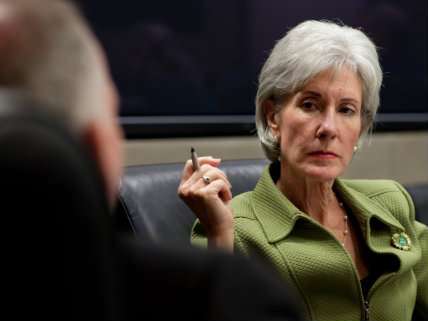Obamacare's Medicaid Problem

The Obama administration has pointed the relative success of state-based exchanges as a sign that Obamacare's health insurance exchange system can work in practice. But while it's true that several of the state-based exchanges appear to be functioning fairly well, those states may have another problem on the horizon: Many of the successful enrollments so far are in Medicaid, not private insurance. Via CBS News:
As the Obamacare website struggles, the administration is emphasizing state-level success. President Obama said Monday, "There's great demand at the state level as well. Because there are a bunch of states running their own marketplaces."
But left unsaid in the president's remarks: the newly insured in some of those states are overwhelmingly low-income people signing up for Medicaid at no cost to them.
Matt Salo, executive director of the National Association of Medicaid Directors, said, "We're seeing a huge spike in terms of Medicaid enrollments."
He says the numbers have surprised him and state officials.
CBS News has confirmed that in Washington, of the more than 35,000 people newly enrolled, 87 percent signed up for Medicaid. In Kentucky, out of 26,000 new enrollments, 82 percent are in Medicaid. And in New York, of 37,000 enrollments, Medicaid accounts for 64 percent. And there are similar stories across the country in nearly half of the states that run their own exchanges.
Maryland, another state running its own exchange, has enrolled about 80,000 people in Medicaid, but only about 2,300 in private plans.
Medicaid was always supposed to be part of the mix, and the Congressional Budget Office even projected that Medicaid enrollment would be higher than private enrollment in 2014. But the numbers we're seeing so far are way out of proportion to what was expected.
The issue here is that if states don't get high enrollment in private plans, and the enrollment mix isn't weighted enough toward relatively young and healthy beneficiaries, you end up with a small, lopsided private insurance pool made up mostly of older, sicker, and thus more expensive individuals. As former federal Medicaid chief Gail Wilensky tells CBS, "Either the private insurance enrollments come up somewhere around the expected amount or there's going to be a problem. …You need a volume and you need a mix of people that are healthy as well as high users in private insurance, in order to have it be sustainable." It's possible that these early enrollment figures are just the products differing levels of enthusiasm between Medicaid eligible individuals and folks enrolling in private sector coverage. But if not, this could be a real problem.


Show Comments (194)